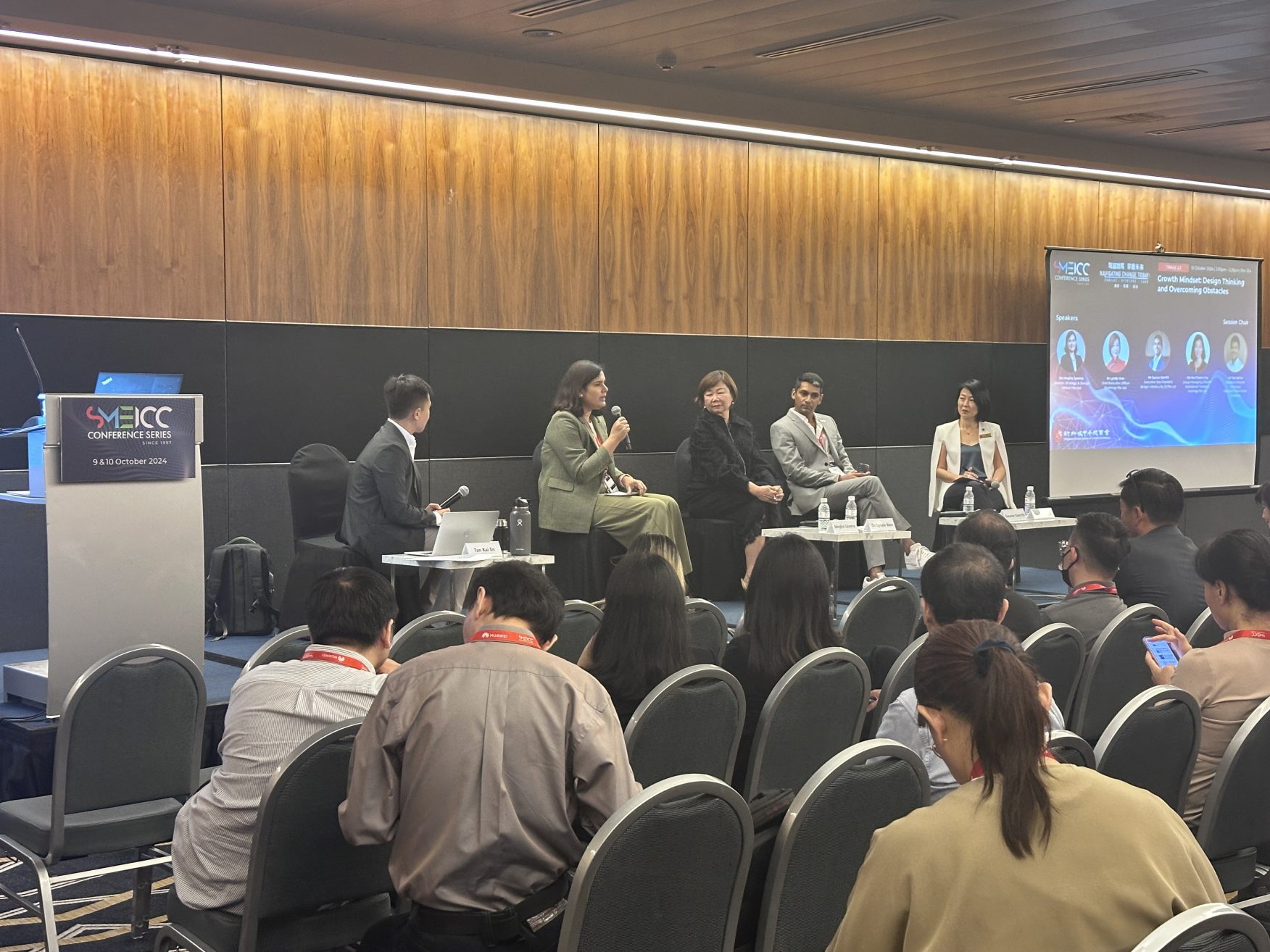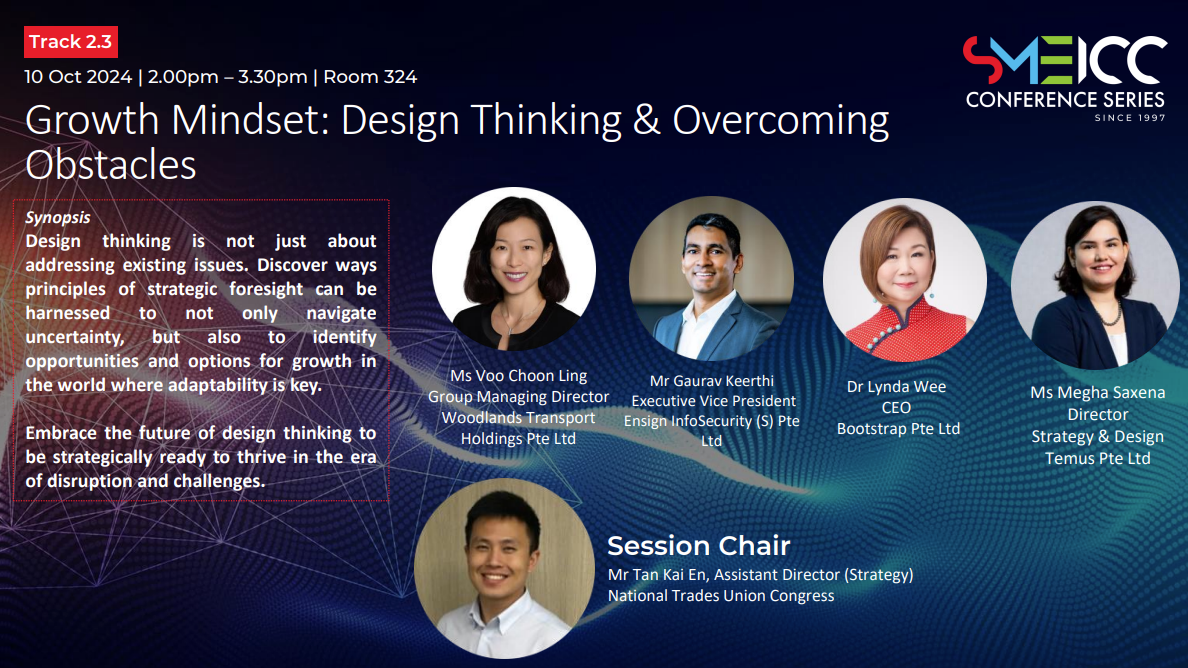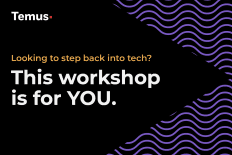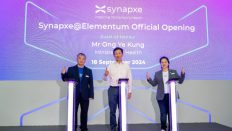How Design Thinking Fosters a Growth Mindset for Innovation and Continuous Learning
In today’s competitive business landscape, adopting a growth mindset is essential for driving sustainable innovation. One of the most effective frameworks to cultivate this mindset is Design Thinking. By integrating Design Thinking into organizational culture, companies can not only solve complex business problems but also drive sustainable growth through innovation and continuous improvement.
Here are some key takeaways from the panel discussion at SMEICC 2024:
What is Design Thinking?
Design Thinking is a human-centered approach to solving complex problems by deeply understanding user needs. By focusing on user experience, businesses can create solutions that are both relevant and meaningful. This method ensures that innovation addresses real-world challenges, resulting in greater customer satisfaction.
How Design Thinking Promotes a Growth Mindset
To achieve sustainable innovation, businesses must find the balance between desirability, feasibility, and viability. Desirability ensures that the solution meets customer needs, feasibility checks if it can be built with available resources, and viability focuses on the business case for long-term success. This combination is where the true innovation sweet spot lies.
Key Benefits of Design Thinking for Business Innovation
A key part of Design Thinking is its focus on continuous learning. The process involves prototyping, testing, and iterating on ideas to refine them. By embracing failure as a learning opportunity, companies can adopt a growth mindset, encouraging creativity and resilience throughout the innovation journey.
Additionally, Design Thinking encourages collaboration across teams, breaking down silos and fostering co-creation. By involving diverse stakeholders, businesses can develop holistic solutions that are adaptable and scalable.
For large-scale transformations like product innovation, design thinking is embedded in every stage – discover, define, design, and deliver. It validates value proposition and feasibility early, ensuring the product fits seamlessly into the user’s ecosystem and drives adoption.






